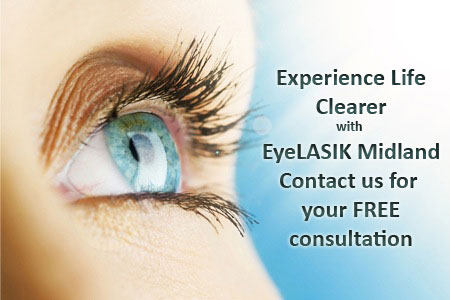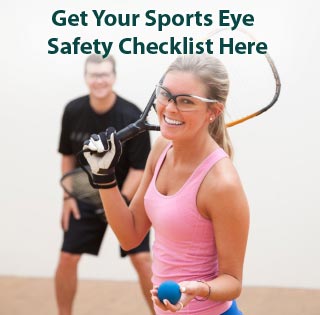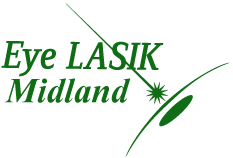by EyeLASIK | Sep 4, 2014 | better vision, eye health
LASIK surgery patients enjoy almost immediate beneficial results. However, it’s still important to protect your eye health from the sun in the days and weeks following the LASIK procedure. The Eye Surgery Education Council states doctors may prescribe or recommend special sunglasses to wear, but protecting the eyes from UV rays is important year-round to preserve your eye health. For sunglass shopping prior to your laser surgery procedure, here are some excellent tips to keep in mind as you browse:
Tips On Choosing The Right Lenses
Polarized and mirrored lenses
-Sunlight is the most dangerous enemy for your eye health, but light glare reflecting off water, snow, glass or cement pavement can also do damage to your eyes and your vision. That’s why polarized lenses, which greatly reduce glare, are a wise and prudent purchase advised by the Glaucoma Research Foundation. Polarized sunglasses are particularly useful for active individuals who spend a lot of time outside, or near bodies of water, particularly during the bright summertime.
Dark lenses are better lenses-
Even with polarized sunglasses, everyone needs sunglasses that will protect eyes from UV radiation. As a rule, darker colored lenses are better. When testing out a pair, wear the glasses indoors and stand in front of a mirror. If your reflection can be seen clearly in the mirror, you should buy much darker lenses than the glasses you are trying on.
How many do I need?
-Most people actually have more than one pair of sunglasses, which can be good for your eye health! For example, the darkest lenses may be ideal for a day spent at the beach, but when you’re driving, you might want something that is a little clearer in true vision. You can also consider having an extra pair to keep just in case you accidentally leave your favorite pair behind.
Be Selective
-The quality and eye health safety of sunglasses should be at the top of your mind when searching for a pair of sunglasses. However, if you pick out glasses that don’t suit your personal style and look, you’ll be unlikely to wear them as you should, increasing the chance for UV exposure. In addition to finding glasses that block out UV radiation and cut down on glare, look for a pair of frames that flatter your face and go with your overall look.
Evaluate Your Needs
In the sunglass selection, choices are endless. One important decision is whether to get polarized or regular sunglass lenses. Evaluate your needs for sunglasses carefully. Too much unprotected exposure to sunlight causes vision problems such as cataracts and other unforgiving eye diseases.
Polarized lenses protect eye health and are better at blocking glare from sunlight, snow, glass, water or metal. Polarized lenses may eliminate glare, but since they cost more than regular sun lenses, people hesitate. Generally the cost is $20 to $60 more for the same sunglass style in polarized lenses. For people who have had LASIK surgery, or if they work, live or play near the water or on snow slopes or even if you are around glaring cement pavement daily, it is worth the price to conserve eye health.
Therefore, ask not just which is better for eye health, but which is better for your life and the activities you’re involved in. If you’d like more information on your eye health, or if you’re wondering if LASIK can help you, contact us HERE!
by EyeLASIK | Aug 13, 2014 | better vision, Children's Eye Health
When you have a baby you’re always marking your calendar for pediatrician appointments assuming they check it all. But what about the eyes. According to the American Optometric Association (AOA), infants should have their first comprehensive eye exam at 6 months of age. Children then should have additional eye exams at age 3, and just before they enter the first grade — at about age 5 or 6.
Although 6 months may seem young, the six-month exam is also to make sure the baby’s eyes are developing normally. An eye doctor can spot a condition commonly known as “lazy eye” (the medical term is amblyopia) very early in a child’s life. And, early treatment can stop bigger problems down the road. Other exams should be in the 3 to 4-year-old range, because the eyes have basically done their growing and developing by then. And a pre-kindergarten exam is a must (don’t assume school-offered vision screenings are enough). After that, a yearly trip to the eye doctor will keep tabs on young eyes that can change fast.
A child’s eye exam will also focus on the classic vision problems: nearsightedness (myopia), farsightedness (hyperopia), structural irregularity in the eye (astigmatism) and a few other conditions, too. In between those yearly eye exams, keep a look out for symptoms of eye problems in your child. Because, like everything else going on with their little bodies, their eyes can change seemingly overnight.
Here are some things to watch for in between your child’s eye exam
- Squinting. The classic symptom of either nearsightedness (not seeing well far away) or farsightedness (not seeing well close-up). Glasses are probably in order.
- Alignment problems. If one eye keeps “drifting off,” it could be “lazy eye” or amblyopia. Treatment includes a corrective eye patch on the normal eye so it forces the weaker eye to work harder and improve. The younger the child, the better to avoid a grade-school patch.
- One eye. If your child closes one eye and it helps him or her see better, there could be a structural problem like astigmatism.
- Eye rubbing. If your child rubs his or her eyes or you hear complaints of headaches, see the eye doctor. There may be some eyestrain going on that glasses can help.
Remember that proper vision at an early age is vital to insure your child has the visual skills he or she needs to perform well in school.
Be sure you receive all our tips for healthy vision for your whole family by signing up for our newsletter. Click HERE!

by EyeLASIK | Jul 30, 2014 | better vision, Eye LASIK, laser vision correction surgery
The first step in the LASIK procedure is the evaluation or consultation. During this appointment a trained eye doctor evaluates your results to ensure you’re a candidate for laser eye surgery. After a thorough discussion and exam, we’ll be able to determine if laser eye surgery is right for you. We’ll also recommend the best procedure based on your exam results. We perform a wavefront diagnosis using the WaveScan WaveFront system. Your eye is unique—as personal as your fingerprint or your DNA. The WaveScan WaveFront system creates a 3-D map that provides detailed information of your vision correction requirements to develop a personalized laser vision correction plan.
Want to read more about the different procedures! Check out our blog on LASIK vs. Epi-LASEK https://eyelasikmidland.com/epi-lasek-eye-surgery/
Please remember, it will be best to discontinue wearing your contact lenses several days before your evaluation appointment. Contact lenses distort the shape of your cornea, and we will want your cornea to have returned to it’s natural shape by the time of your appointment.
Ordinary defects in your vision can be corrected using eye glasses, contact lenses, and traditional LASIK surgery. Normal myopia, hyperopia, and astigmatism can be corrected using these traditional methods. However, there are irregularities of the eye that can only be spotted and treated with the Wavefront LASIK technology. The Wavefront LASIK will create an individualized laser correction program for the surface of your eye. This will be guided by a detailed analysis of the errors in your vision as seen in the way light travels through your eye.
Why does Eye LASIK Midland choose to use the Wavefront LASIK?
At Eye LASIK Midland we feel there are advantages to the Wavefront LASIK in terms of quality of your vision.
- There is a greater chance that you will achieve a twenty-twenty vision
- There is a greater chance that you will get better vision than twenty-twenty
- There is a lower chance of losing the optimal correction for your vision
- There is a lower chance of losing the quality in your vision
- There is a lower chance of losing sensitivity in terms of contrast
- There is a lower chance of getting glares
- It is unlikely that you will have problems seeing at night
There may be a chance to correct previous refractive surgeries and make seeing better with the custom LASIK refractive surgery.
Ready to make your FREE consultation with Eye LASIK Midland? Click HERE or on the image below.


by EyeLASIK | Jul 23, 2014 | better vision, Eye LASIK, laser vision correction surgery

Most people know the best ways to protect your body from harmful UV rays, but you may be forgetting about your eyes. Turns out your shades are more than a fashion statement. Sunglasses could help you avoid problems as varied as sunburn, cataracts and skin cancer.
Let’s look at a list of how specific areas of your eye are effected by the sun.
White of the eye
Sun damage can cause a condition called pinguecula, a thickening of the conjunctive, which is the clear, thin membrane that covers the white of the eye. This causes raised, yellow spots on the eye, near the cornea. While there’s no known danger to vision, it can get irritated and inflamed. The conjunctiva also thicken and grow over the cornea, creating a condition called pterygium (also known as surfer’s eye), which might obscure vision.
Iris
Research has suggested that blue-eyed people are more susceptible to macular degeneration, according to Brown. While at this point we don’t know the exact reason, it is recommended even more strongly that people with light eyes wear sunglasses.
Retina
The retina is a light-sensitive layer of tissue that lines the back of the eye. The macula is the part of the retina where we have straight ahead and detailed vision. That macula can start to deteriorate, causing a condition called macular degeneration, leading to blurred vision or a blind spot. Some information suggests there could be an association between UV light and macular degenation.
Lens
Behind the iris of the eye is a crystalline lens that helps to focus light onto the retina. That lens fan develop a cloudiness, whick is known as a cataract. UV light has been implicated in the development of some types of cataracts. The more you wear sunglasses and a hat, the longer you can put it off.
Cornea
Here’s a common summertime scenario: People go the shore for the day, and as they’re driving home their eyes feel kind of gritty, like maybe there’s sand in them. By 10 p.m. they’re in agony and by 11 they’ve landed in the ER for a sunburned cornea, which is a giant scratch on the cornea. While it doesn’t cause long term damage, it can cause tremendous pain and even temporary blindness.
Skin around the eyes
The skin around the eyes and, in particular, the eyelids are made up of a very thin tissue. Over time, repeated UV exposure (not to mention constant squinting) can lead to wrinkles and age spots, as well as small skin cancers around the eye.
With laser vision correction surgery you can ditch those glasses & contacts for a great pair of effective sunglasses. Schedule your FREE evaluation with Eye LASIK Midland today! Click HERE or by clicking in the image below.

by EyeLASIK | Jul 9, 2014 | better vision, Eye LASIK, laser vision correction surgery
The freedom from glasses and contacts that Lasik eye surgery offers is completely life-changing. Add in the fact that Lasik eye surgery is now one of the safest procedures you can have to correct your vision, and it no wonder millions of people have chosen to have Lasik eye surgery.
Although Lasik surgery is a simple procedure, there is still a recovery period. However, Lasik recovery is usually quick and free from pain, although you may have discomfort for a day or two after the procedure. However, there are things you can do to ensure that your Lasik recovery is successful.
Get Plenty of Rest During Recovery
After your procedure, go home and take a nap. Let your eyes rest. Although, Lasik is a safe and simple procedure, your eyes still need time to recover. The best way to give them a head start is to keep them closed. Most patients do feel some irritation once the topical anesthetic wears off, and keeping your eyes closed is a great way to minimize this irritation.
Use Your Prescription Drops as Directed During Recovery
It’s important to use the drops prescribed by your ophthalmologist as directed during your Lasik recovery. These drops should include an antibiotic, along with a steroid and possibly an anti-inflammatory medication. These will help prevent infection and swelling, while alleviating some of the irritation you may feel shortly after the procedure. If you have any questions on how to use your drops, ask your physician before you leave the surgery center.
Don’t Rub Your Eyes During Recovery
Rubbing your eyes during your Lasik recovery period can cause complications with the flap created during the procedure, which can lead to blurry vision and possibly the need for more surgery. This is another great reason to take a nap after your procedure since you won’t feel the need to rub your eyes while you’re asleep.
Where Protective Eyewear During Recovery
You’ll be given safety glasses or goggles to wear after your procedure. For the first 24 to 48 hours during your Lasik recovery, you should wear these anytime you are outside to prevent any dirt or debris from getting into your eyes. You will also need to wear these glasses or goggles anytime you sleep for the first week after the procedure. This will help prevent you from accidentally hitting or rubbing your eyes in your sleep.
Use Artificial Tears During Recovery
In the kit you are given for your Lasik recovery, you will have drops that can be used to moisturize your eyes. Use them. These artificial tears will help alleviate discomfort during your Lasik recovery, as well as keep your corneas hydrated, which will allow them to heal quickly and properly. These drops can be used as often as needed. If you will be using them at the same time as your prescription drops, use the tears first and then wait five minutes before instilling the prescribed drops.
These five tips will help to ensure your Lasik recovery goes smoothly and help alleviate any discomfort. However, be sure to check with your surgeon to see if he or she has any other recommendations for your Lasik recovery.
Ready to see if Eye LASIK surgery is for you? Schedule your FREE evaluation with Eye LASIK Midland. Click HERE or on the image below.


by EyeLASIK | Jul 2, 2014 | better vision, Eye LASIK
If you play sports, or even watch them on television, you know how common injuries can be. What you may not know is how commonly the eye is subject to one of these injuries. If you’ve been watching the Little League All Stars or the College World Series recently, you probably noticed the players wearing safety glasses.
Professional athletes know their eyes are precious, and they take protective eyewear seriously. Professional volleyball, basketball, and baseball players are among the many athletes who wear eye protection on the field. Even water sports athletes including swimmers know the importance of wearing proper eye protection.
Sports-related eye injuries are very common. In fact, thousands of adults and children suffer these types of injury every year. The most common of these injuries is the corneal abrasion or scratch and laceration (a cut).
While a scratch to the cornea is a minor injury that can be treated fairly easily, it can also lead to vision loss if not treated at all. Other more serious sports injuries can include a traumatic cataract, a fractured eye socket, bleeding in the eye, a penetrating injury that punctures or ruptures the eyeball or even a retinal detachment, all of which can lead to blindness.
Children are particularly prone to eye injuries due to their underdeveloped depth perception. There are a number of ways a child’s eye can be injured while playing sports. Direct impact from a baseball, an elbow or finger to the eye, sand in the eye and even glare from the sun can cause an eye injury.
Protect Your Eyes
It’s important to protect your eyes with proper eyewear anytime you engage in athletics to prevent injury. But it’s also important to wear the right type of eyewear to protect your eyes.
Most athletes wear protective eyewear made with polycarbonate lenses. Polycarbonate is a type of high-grade plastic that is impact resistant and about 20 times stronger than regular eyeglass lenses. It is also pliable, which means it can be used to make a variety of eyewear to protect your eyes including safety glasses, face shields and sunglasses.
When choosing eyewear to protect your eyes, it is also important to make sure the materials used meet the American Society of Testing and Materials, or ASTM, standards for your particular sport. Our eye care professionals can help you decide which eyewear is best to protect your eyes.
Wondering what is recommended by professionals in sports protective eyewear? Get our checklist and know you’ll be protected. CLICK HERE or on the image below.









